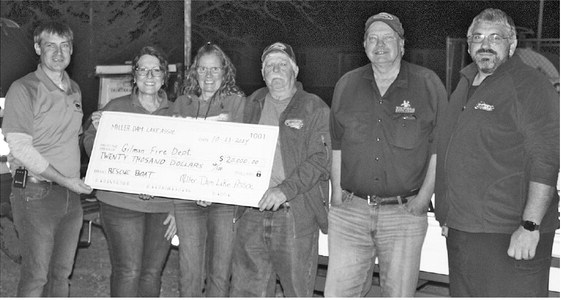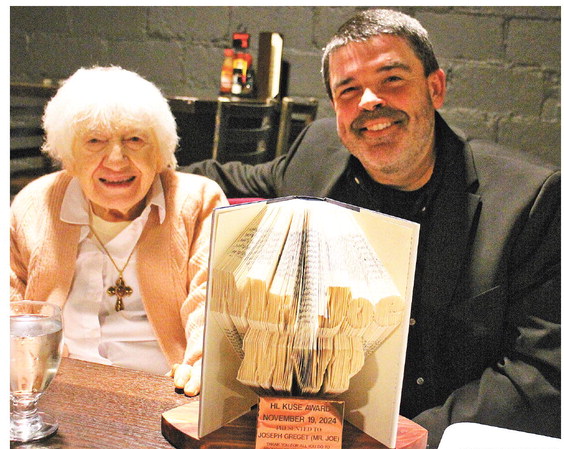Forest administrator lays out plans to improve wildlife habitat


Taylor County is turning its eye to increasing the amount of forest management going to recreation and wildlife compared to focusing on growing revenue.
At the Nov. 1 forestry committee meeting, Forest Administrator Luke Williams presented some ideas on future wildlife projects he would like to work on in the coming year.
Williams said he would like to expand management for habitat and wildlife using grant funds for those purposes.
One area he proposed was the creation of additional forest openings. These are areas that are left clear of trees and are planted with clover and rye grass and periodically mowed. Willams said they have value for deer, grouse and turkey populations. He said there is funding available through the turkey stamp program and the DNR can assist in putting in the openings.
He proposed an 10 additional openings be created over the next few years. He said it is his intention to keep the openings smaller at between a half or three-quarters of an acre in size so that they will be easy to maintain in the future.
Ideally it would need to be maintained only once every three to five years after being established.
In addition to being good for attracting wildlife, the forest openings are also beneficials to hunters and sportsmen using the forest.
“I think the people of Taylor County would approve of that,” said committee chairman Scott Mildbrand.
Committee member Rollie Thums agreed noting the name of the committee is “forestry and recreation.”
Committee member Jim Gebauer also agreed noting that many people don’t have land to hunt on and improving public lands for game animals and hunting access was a good move.
Williams said the emphasis would be to put the clearings in areas where it made sense and to keep them easy to maintain within the existing workload of the department.
“We don’t want to put in openings we don’t have capacity to maintain,” Williams said.
Williams also said he would like to look at utilizing Aspen and alder shearing practices in the county forest as a way to improve habitat for woodcock and grouse. Both tree species are typically managed through clear-cutting an area every 20 to 25 years. In shearing, the cutting would be done in a checkerboard pattern three to five acres at a time so that there are various ages of trees in the forest. He noted that the more mature the stands are, the less benefits they have to local wildlife and that having the younger growth of trees benefits all types of wildlife.
He noted the National Resource Conservation Service’s young forest initiative is one potential source of funds to help get the program going. Under these types of programs, an area would be cut every five years and staggered.
“It works. You start to see more game,” Williams said of his experience with this forest management practice in other places.
Williams said they needed to use common sense in any of these so that that they don’t negatively impact the economic value of the forest crops.
“If you get too cute with stuff it will have an economic cost,” he said.
A third initiative Williams said he would like to work on in the forest is with getting more wood duck houses built and put up. He sought the committee’s OK to approach shop teachers in the local school districts about having students construct the houses and his office would place them in the forest. He said he this could eventually expand into having groups build picnic tables to be placed in the forest. He said there may also be opportunities for lumber to be donated to these types of projects.
Another area that Williams proposed the county looks at is improving parking in the forest especially around the roughed grouse grounds. He said there are a number of hunters in the area currently including ones from other states and there are few places for them to park vehicles other than on the county forest roads. He said he would like to see places where parking could be developed for four to five pickup trucks without having a huge impact on the overall forest.
Thums noted that these parking areas could also serve as dispersed camping spots and encourage other users of the forest. “I think it would be an improvement,” Thums said.
“It is public land and the public should be able to use it easily,” Thums said. “I whole heartedly support it.”
Thums’ support was echoed by other committee members.
In other business, committee members:
• Approved having Williams work wth the snowmobile clubs to get a bridge inspector to look the Mink Creek Snowmobile Bridge to determine its condition. Williams noted that with the poor season last year state snowmobile funding is tight and that having an inspection on record adds a lot of points to the competitive grant funding process. He said the 10 points from an inspection can bump the project ahead of others in the state. There is an April 15 deadline to apply for the snowmobile grants and he is working with the highway department to get the bridge inspected.
• Approved using ATV program funds to place three large boulders by the Camp 8 Dam to prevent ATV and UTV drivers from driving over the new dam structure. Traffic on the dam will potentially damage it. The county got the boulders donated locally and the only cost will be for the time and equipment to place them.
• Approved putting out the timber sales for bid. Willams said the sales include ash clear cut in an attempt to get the trees cut ahead of the spread of emerald ash borer in the region. Williams cautioned that there may not be bidders interested in the ash projects, but he also noted that they did adjust the minimum bid prices to try to make them more appealing to loggers. The committee approved putting seven sales totaling 361 acres to bid. This will result in 560 acres for the year between the spring and fall sales. Williams said this is higher than normal and also said the county needed to have lower expectations for forest revenues as market conditions remain relatively poor. He estimated the county would see forest revenues drop to the $300,000 to $350,000 range.


